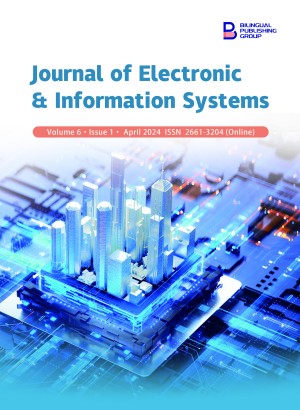Attribute-specific Cyberbullying Detection Using Artificial Intelligence
DOI:
https://doi.org/10.30564/jeis.v6i1.6206Abstract
Cyberbullying, a pervasive issue in the digital age, poses threats to individuals’ well-being across various attributes such as religion, age, ethnicity, and gender. This research employs artificial intelligence to detect cyberbullying instances in Twitter data, utilizing both traditional and deep learning models. The study repurposes the Sentiment140 dataset, originally intended for sentiment analysis, for the nuanced task of cyberbullying detection. Ethical considerations guide the dataset transformation process, ensuring responsible AI development. The Naive Bayes algorithm demonstrates commendable precision, recall, and accuracy, showcasing its efficacy. The Bi-LSTM model, leveraging deep learning capabilities, exhibits nuanced cyberbullying detection. The study also underscores limitations, emphasizing the need for refined models and diverse datasets.
Keywords:
Cyberbullying detection; Social media analysis; Artificial intelligence; Naive Bayes; Bi-LSTM; Ethical AI; Machine learning; Digital well-beingReferences
[1] Agustiningsih, N., Yusuf, A., Ahsan, A., 2023. Relationships among self-esteem, bullying, and cyberbullying in adolescents: a systematic review. Journal of Psychosocial Nursing and Mental Health Services. 1–7. DOI: https://doi.org/10.3928/02793695-20231013-01
[2] Erbiçer, E.S., Ceylan, V., Yalçın, M.H., et al., 2023. Cyberbullying among children and youth in Türkiye: A systematic review and meta-analysis. Journal of Pediatric Nursing. 73, 184–195. DOI: https://doi.org/10.1016/j.pedn.2023.09.003
[3] Zhang, W., Huang, S., Lam, L., et al., 2022. Cyberbullying definitions and measurements in children and adolescents: Summarizing 20 years of global efforts. Frontiers in Public Health. 10, 1000504. DOI: https://doi.org/10.3389/fpubh.2022.1000504
[4] Chan, T.K., Cheung, C.M., Lee, Z.W., 2021. Cyberbullying on social networking sites: A literature review and future research directions. Information & Management, 58(2), 103411. DOI: https://doi.org/10.1016/j.im.2020.103411
[5] Civility, Safety and Interaction Online [Internet]. Microsoft; 2020. Available from: https://news.microsoft.com/wp-content/uploads/prod/sites/421/2020/02/Digital-Civility-2020-Global-Report.pdf
[6] Sarker, I.H., 2022. AI-based modeling: Techniques, applications and research issues towards automation, intelligent and smart systems. SN Computer Science. 3, 158. DOI: https://doi.org/10.1007/s42979-022-01043-x
[7] Chowdhary, K.R., 2020. Fundamentals of artificial intelligence. Springer India: New Delhi.
[8] Speech and Language Processing: An Introduction to Natural Language Processing, Computational Linguistics, and Speech Recognition [Internet].
[9] Leekha, G., 2021. Learn AI with Python: Explore machine learning and deep learning techniques for building smart AI systems using Scikit-Learn, NLTK, NeuroLab, and Keras (English Edition). BPB Publications: New Delhi.
[10] Bokolo, B.G., Liu, Q. (editors), 2023. Cyberbullying detection on social media using machine learning. IEEE INFOCOM 2023-IEEE Conference on Computer Communications Workshops (INFOCOM WKSHPS); 2023 May 20; Hoboken, NJ, USA. New York: IEEE. p. 1–6. DOI: https://doi.org/10.1109/INFOCOMWKSHPS57453.2023.10226114
[11] Singh, N., Sinhasane, A., Patil, S., et al. (editors), 2020. Cyberbullying detection in social networks: A survey. 2nd International Conference on Communication & Information Processing (ICCIP); 2020 Nov 27–29; Tokyo, Japan.
[12] Elsafoury, F., 2020. “Cyberbullying Datasets,” Mendeley. Com [Internet] [Accessed: 04-Summer-2021]. Available from: https://www.kaggle.com/datasets/gbiamgaurav/cyberbullying-detection
[13] Bokolo, B.G., Liu, Q., 2023. Combating cyberbullying in various digital media using machine learning. Combatting cyberbullying in digital media with artificial intelligence. Chapman and Hall/CRC: London. pp. 71–97.
[14] Chong, W.J., Chua, H.N., Gan, M.F. (editors), 2022. Comparing zero-shot text classification and rule-based matching in identifying cyberbullying behaviors on social media. 2022 IEEE International Conference on Artificial Intelligence in Engineering and Technology (IICAIET); 2022 Sep 13–15; Kota Kinabalu, Malaysia. New York: IEEE. p. 1–5. DOI: https://doi.org/10.1109/IICAIET55139.2022.9936821
[15] Purnamasari, N.M.G.D., Fauzi, M.A., Indriati, L.S.D., et al., 2020. Cyberbullying identification in Twitter using support vector machine and information gain based feature selection. Indonesian Journal of Electrical Engineering and Computer Science. 18(3), 1494–1500. DOI: https://doi.org/10.11591/ijeecs.v18.i3.pp1494-1500
[16] Talpur, B.A., O’Sullivan, D., 2020. Cyberbullying severity detection: A machine learning approach. PloS One. 15(10), e0240924. DOI: https://doi.org/10.1371/journal.pone.0240924
[17] Almomani, A., Nahar, K., Alauthman, M., et al., 2024. Image cyberbullying detection and recognition using transfer deep machine learning. International Journal of Cognitive Computing in Engineering. 5, 14–26. DOI: https://doi.org/10.1016/j.ijcce.2023.11.002
[18] Obaid, M.H., Guirguis, S.K., Elkaffas, S.M., 2023. Cyberbullying detection and severity determination model. IEEE Access. 11, 97391–97399. DOI: https://doi.org/10.1109/ACCESS.2023.3313113
[19] Aizenberg, E., Van Den Hoven, J., 2020. Designing for human rights in AI. Big Data & Society. 7(2). DOI: https://doi.org/10.1177/2053951720949566
[20] Sap, M., Card, D., Gabriel, S., et al. (editors), 2019. The risk of racial bias in hate speech detection. The 57th Annual Meeting of the Association for Computational Linguistics; 2019 Jul 28–Aug 2; Florence, Italy. p. 1668–1678.
[21] Gasparetto, A., Marcuzzo, M., Zangari, A., et al., 2022. A survey on text classification algorithms: From text to predictions. Information. 13(2), 83. DOI: https://doi.org/10.3390/info13020083
[22] Kaushik, M., Prakash, P., Ajay, R., et al. (editors), 2020. Tomato leaf disease detection using convolutional neural network with data augmentation. 2020 5th International Conference on Communication and Electronics Systems (ICCES); 2020 Jun 10–12; Coimbatore, India. New York: IEEE. p. 1125–1132. DOI: https://doi.org/10.1109/ICCES48766.2020.9138030
[23] Bokolo, B.G., Ogegbene-Ise, E., Chen, L., et al. (editors), 2023. Crime-intent sentiment detection on Twitter data using machine learning. 2023 8th International Conference on Automation, Control and Robotics Engineering (CACRE); 2023 Jul 13–15; Hong Kong, China. New York: IEEE. p. 79–83. DOI: https://doi.org/10.1109/CACRE58689.2023.10208384
Downloads
How to Cite
Issue
Article Type
License
Copyright © 2024 Adeyinka Orelaja, Chidubem Ejiofor, Samuel Sarpong, Success Imakuh, Christian Bassey, Iheanyichukwu Opara, Josiah Nii Armah Tettey, Omolola Akinola

This is an open access article under the Creative Commons Attribution-NonCommercial 4.0 International (CC BY-NC 4.0) License.




 Adeyinka Orelaja
Adeyinka Orelaja






